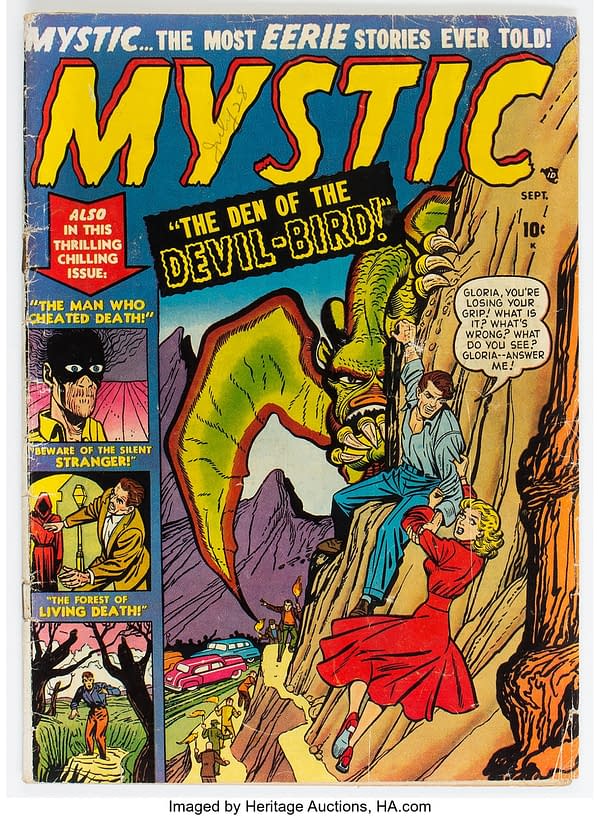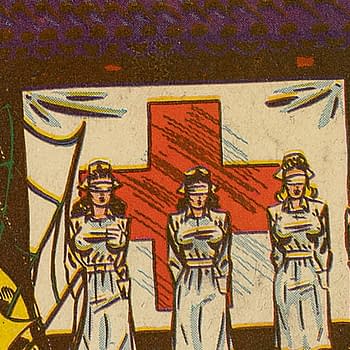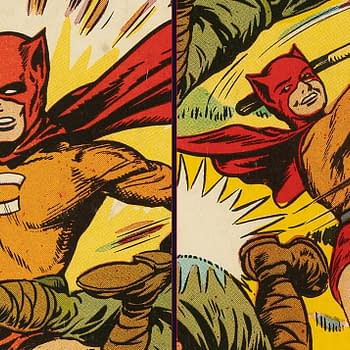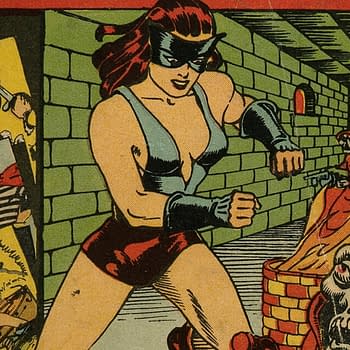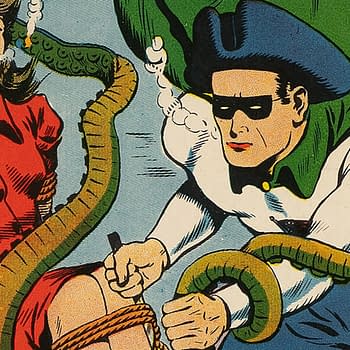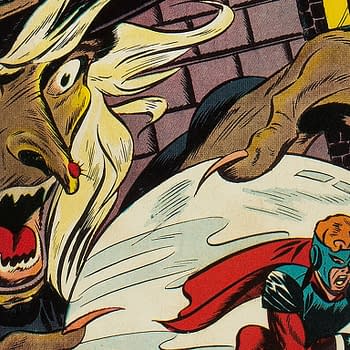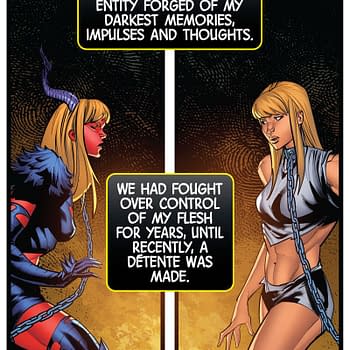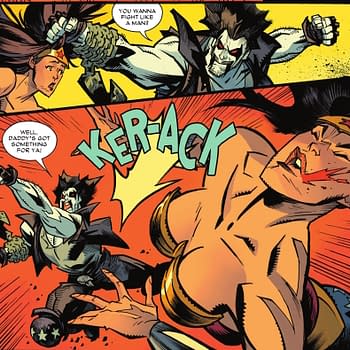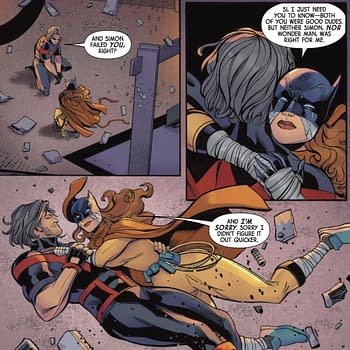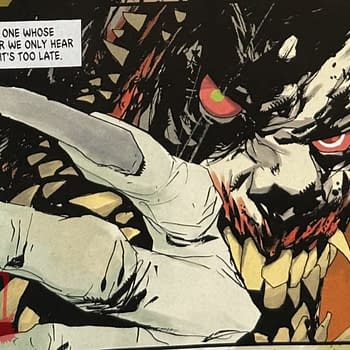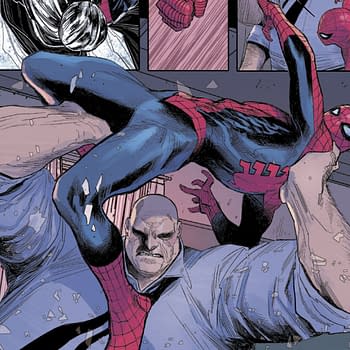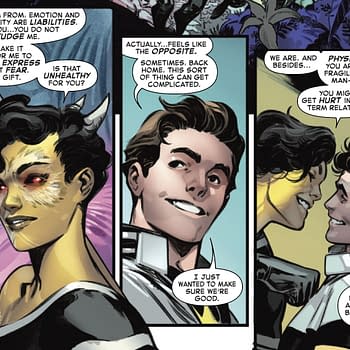Posted in: Comics, Heritage Sponsored, Vintage Paper | Tagged: basil wolverton, mystic comics
Marvel Comics, Basil Wolverton and the H-Bomb
In an industry with a history full of ridiculously creative artists and writers, Basil Wolverton still stands out. With an output that spans from Spacehawk to Powerhouse Pepper, Brain Bats of Venus to the most infamously weird caricatures ever created, Wolverton's imagination seemed limitless. I like to seek out undiscovered country for these posts, and also love trying to figure out what made historical creators tick when they created these underappreciated gems — and this Wolverton story scratches both those itches. When I started to unravel Wolverton's cover-featured story Den of the Devil Bird for Marvel's Mystic #4 from 1951, I knew I had something wonderfully weird on my hands. There's a raw copy of Mystic #4 in Heritage's 2020 July 26-27 Sunday & Monday Comics, Animation, & Art Weekly Online Auction.
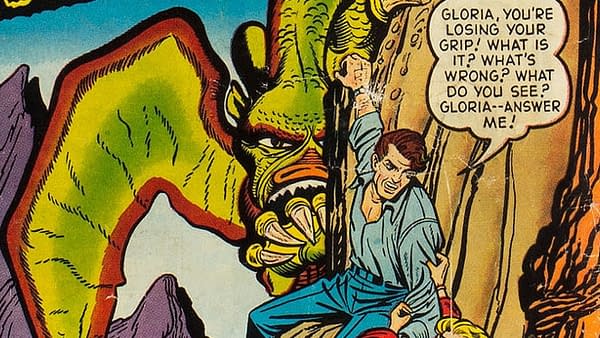
The six-page Den of the Devil Bird story in Mystic #4 was both written and drawn by Wolverton. The cover was drawn by Sol Brodsky and inked by Christopher Rule. As it happens, we know a lot about exactly how and when this story developed due to the two-volume The Life and Comics of Basil Wolverton, a must-own set of books by author Greg Sadowski that contains countless work-related documents between Wolverton and the editors and publishers for whom he worked.
Brain Bats of Venus: The Life and Comics of Basil Wolverton Volume 2 tells us that Stan Lee wrote Wolverton in late December 1950 to tell him, "I'm in the market for strange and unusual stories between the three and seven pages in length. These stories should be of the science fiction type or weird tales type." Having subsequently received a few pitches from Wolverton, Lee again replied in a letter received on February 2, 1951:
The one entitled "The Day the Moon Fell" I can use. Make it 6 pages–schedule it for Marvel Tales, April, and change the title to "The End of the World. It's due (complete–all drawn) Feb. 26 '51.
The one entitled "Devil-Birds of the Abyss" is OK, too. Make it 6 pages, schedule it for Mystic, May, and let me have it (complete) by March 12th, '51. Also, change the title to "The Devil Birds."
Both of these stories specifically center around the then-emerging technological terror of the H-Bomb, and for good reason. In August 1949, the Soviet Union detonated its first atomic bomb. On February 2, 1950, Scotland Yard announced the arrest of Klaus Fuchs, a German theoretical physicist who had worked at Los Alamos on the Manhattan Project and passed information to the Soviet Union. It further emerged that Fuchs had been involved in discussions of the then-theoretical H-Bomb (known as the "super bomb" at that time) at Los Alamos. The U.S. upped the stakes by accelerating its development of the H-Bomb, a weapon vastly more powerful than the atomic bomb. So powerful, in fact, that it stunned the public imagination with its frightening scale. At the same time that Basil Wolverton was working on his pitches for Stan Lee in January 1951, emerging news about the development of the H-Bomb reached a fever pitch. For example, the January 13, 1951 issue of U.S. News & World Report ran the following rather alarming Q&A on the theory behind this prospective development (excerpted here):
What, in theory, could the bomb do?
Explosion of the bomb would resemble the explosion of the Hiroshima bomb, with great heat, pressure and radioactivity. But there's no known limit to the size of the burst. It could destroy 100 square miles, maybe 1,000 or more.Could it destroy, say, all of New York City?
Yes, easily. It could replace half a dozen uranium bombs for an undertaking like that.Could a hydrogen bomb wreck two cities, such as Chicago and Detroit?
No, you would still need two bombs, unless the cities were close together. Even 1,000 square miles is only an area about 30 miles long, 35 wide.
Newspapers and magazines across the country were full of such theoretical information and its implications that month, in seeming anticipation of the January-February 1951 Operation Ranger series of tests conducted by the Atomic Energy Commission at the Nevada Proving Ground designed to provide data to be used in subsequent tests (such as Operation Greenhouse) to prove the theories behind the H-Bomb concepts. Operation Ranger was the AEC's first use of the Nevada Proving Ground, a 5,000 square mile area in south-western Nevada, for atmospheric (above-ground) nuclear weapons tests. Given the givens of above-ground nuclear detonations, the tests were observable to people in Nevada from great distances away, which seems to have influenced Wolverton in his development of the Den of the Devil Birds story. The tale takes place in a remote area of Nevada which is almost certainly meant to be the Nevada Proving Ground.
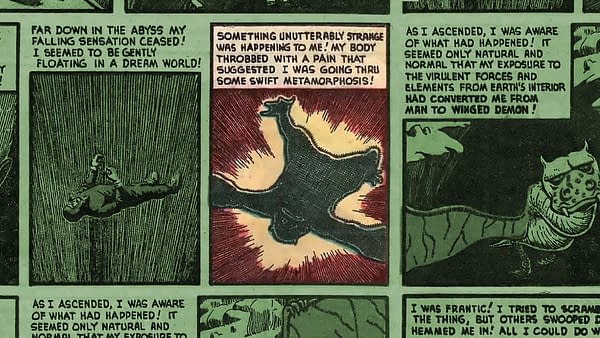
It's little wonder that Basil Wolverton's boundless imagination created a pair of stories that month that transformed these startling developments into even more startling comic book weird science. Den of the Devil Bird deals with the consequences of detonating an H-Bomb in an almost Incredible Hulk-like way. Visitors to the test site are shown undergoing a physical transformation from men into mindless monsters.
There's a very affordable copy of this fascinating response to scientific and political world history in Mystic #4 in Heritage's 2020 July 26-27 Sunday & Monday Comics, Animation, & Art Weekly Online Auction.
